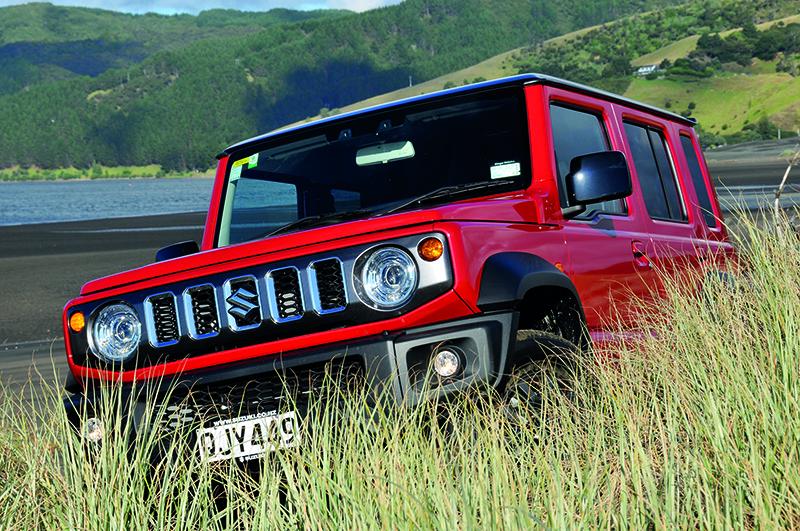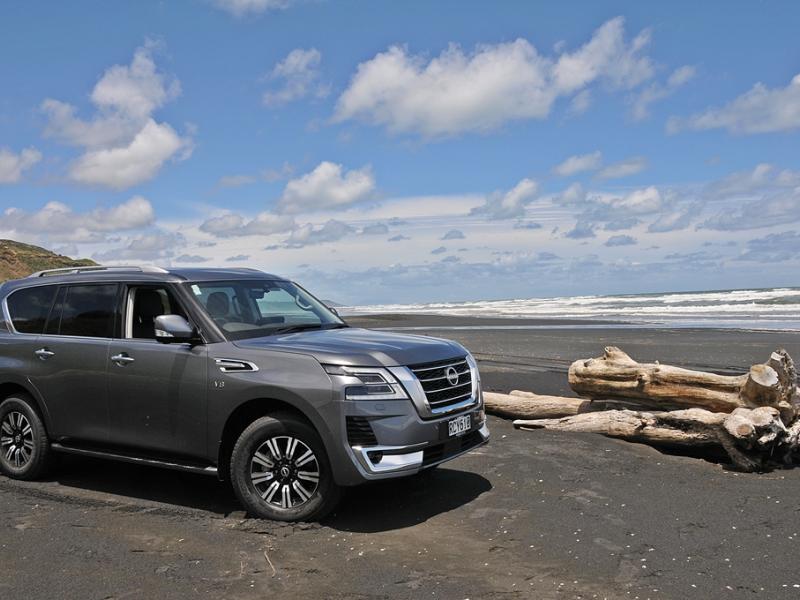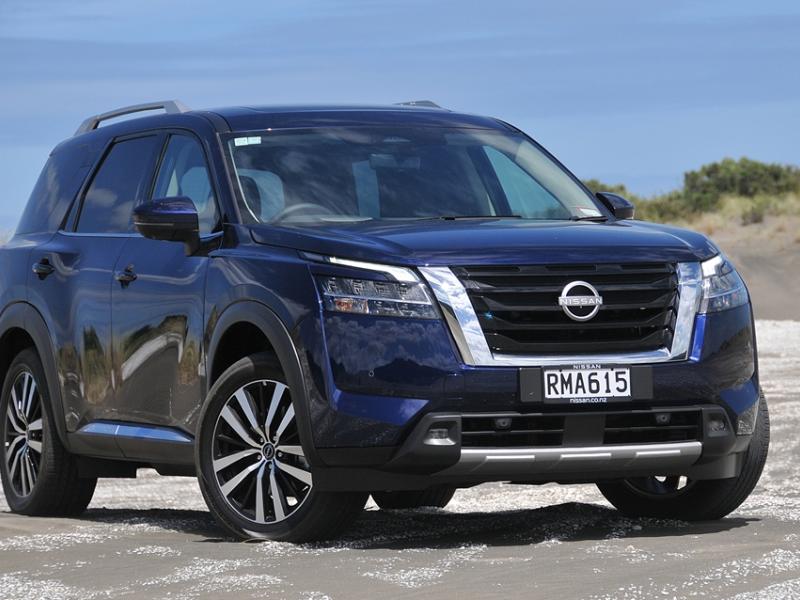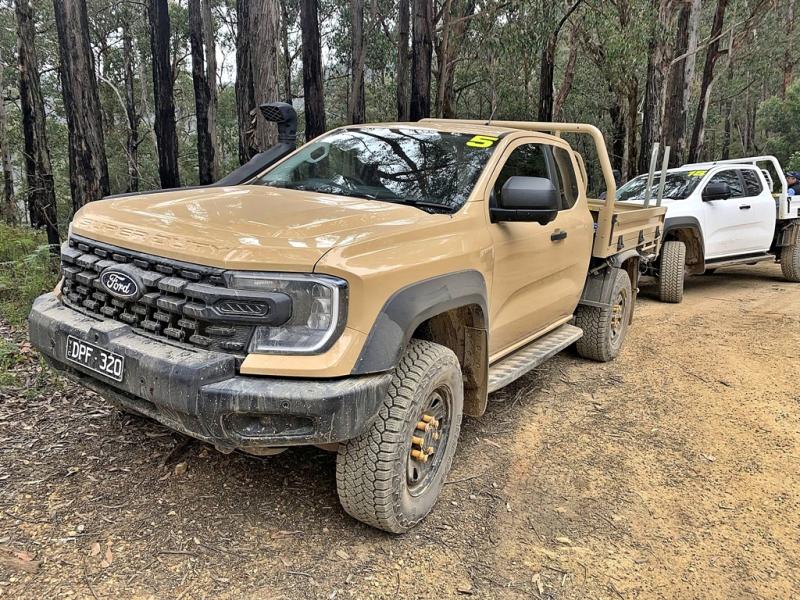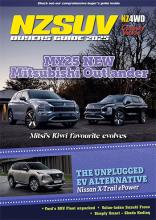It’s light. Only the three-door Jimny treads more lightly on the ground. Less than a month after the launch event took us up to the top of Skipper’s Canyon, the Jimny five-door is in the driveway for a longer test opportunity.
The initial impressions from the launch are confirmed: Jimny five-door is in every sense everything the three-door is, and more. Good things do take time, but it’s only taken five decades to deliver us a five door Jimny. In Aussie, there’s already a nine-month waiting list.
Rightly, Suzuki has kept the five-door model range simple. There’s a single common trim level for manual and auto, the manual at $40,990 and the four-speed auto $44,990. The current Clean Car Standard is built into the latest prices, which means there shouldn’t be any price hikes in the near future, and the abolition of the ute tax further stabilises prices.
We drove both five-speed manual and four-speed automatics on Suzuki NZ’s launch programme – the manual is in the market already, while the auto arrives this month. Suzuki expects a 50/50 sales split, like the three-door. Many hard-core 4WDers swear by manuals, but there’s an argument that automatics allow easier low-range power application in the rough. They’re certainly easier for non-experts.
The five-door, four-seat Jimny is assembled in India from Japanese-made parts kits. All external measurements are identical except an additional 340mm between the front and rear axles. The 2024 Suzuki Jimny ‘five’ is 3,820mm long, 1,645mm wide, 1,720mm high and has a wheelbase of 2,590mm. It is unchanged in width (1,645mm) and height (1,720mm).
The Jimny five-door retains the shorter Jimny’s ladder-frame underpinnings with live axles and iconic appearance, just with a bit more space. The ‘five’ has structural strengthening at the rear to cope with extra weight, which helps tie down the rear suspension as well.
Both models share drivetrains. Murmurings of hybrid applications remain just rumour for now. So, we get the 1.5-litre, 75kW four-cylinder petrol engine.
Appearance tweaks are few but effective. From the side, the extra length adds a balancing extra window at the back. Two-tone paint option contrast-colours the roof and adds $510. The ‘hero colour’ is a lustrous red. The Kinetic Yellow manual ‘five’ we drove in Queenstown is also a good look.
The frontal point of difference is a chrome-framed grille, which adds a pleasant highlight to the front-end styling.
Inside, Jimny ‘five’ retains the cheeky utilitarian character of the ‘three’: funky functional touches such as grab handles and plastic exposed ‘bolt heads’. The analogue dials are easy to read and have a digital screen between for extra info.
As the main stack is designed for just two windows, the switches for the rear side windows are located next to the manual handbrake. One advantage of centre-mounting switches is they are then not vulnerable to rain or muddy water splashes through windows.
The seats have manual adjustments but no height adjustment. The steering wheel adjusts vertically but doesn’t have a telescoping function. That said, it didn’t take much to arrive at a comfortable driving position that gave good frontal visibility.
The five-door brings updates including a 9.0-inch touchscreen with wireless Apple CarPlay/Android Auto (from the S-Cross) and it introduces ‘dual camera braking support’, which replaces the other car’s single-camera-plus-laser automatic emergency braking. There’s autonomous braking and lane-departure warning, and the automatic gets adaptive cruise control. A reversing camera and rear sensor package is standard.
Price-wise, the five-door is a $5,000 step up on the three-door and does edge closer to the Vitara hybrid all-wheel-drive, though the two are likely to appeal to different buyers.
So how does it drive?
Like its three-door sibling.
That is, it’s about refining and re-aligning mindset. Jimny is unlike any other 4WD. Everybody likes the brutal grunt of a Ranger or Amarok. But Jimny argues that there’s more than one way to tackle an obstacle or track.
The ‘five’ is 90kg heavier than the ‘three’. The rear is better behaved, but otherwise a Jimny is a Jimny. It’s light on the road, and light in its controls. The throttle is long-travel with a light spring, brake and clutch likewise.
On-road, the ‘five’ has its own character. Great visibility. Simple to steer. Needs a little stirring off the line (maximum torque happens at 4,000rpm). In town, it’s super-easy to park because the wheels are right at each corner, and the reversing camera is clear and bright. The ‘five’ doesn’t feel as heavy as might be expected. Peak torque of 130Nm is available at 4000rpm, just above mid-range, while peak power sits up close to redline. The gearing means the ‘five’ is pulling 3,000rpm at 100km/h.
Back to the weight though. It stands to reason that the ‘five’ should feel a little slower than the three-door, simply because of the extra weight, but it doesn’t really translate to the seat of the pants ‘feel’ on the road.
Where a Jimny ‘three’ generates 68.5kW/tonne, the ‘five’ figure is 63.3kW/tonne, so it isn’t a huge disparity. The engine remains as entertaining as it always was, and the manual does put a smile on the driver’s face working the gearbox through the gears and keeping the engine in its torque sweet spot.
Off-road, the Jimny is huge fun. It has far and away the best approach and departure angles of any 4WD on the market: 36 degrees front, a stonking 47 degrees rear, and ramp-over drops from 28 degrees in the three-door to 24 degrees – still respectable enough.
The Jimny is very easy to place thanks to its short bonnet, thin pillars, and a big glasshouse. There’s a simple hill-descent control that works neatly, limiting the vehicle to 5km/h in low range and braking individual wheels for controlled descending.
Moving the stubby transfer case lever back engages four-wheel drive, and pushing down selects low-range for technical trails. Adding a locking rear differential would extend the Jimny’s rock crawling ability.
The tyres – Bridgestone Duelers with a fairly ordinary highway tread – are okay on the road, and worked in the silica dust of Skipper’s. Off-road anywhere challenging, they aren’t the best. A switch to a good all-terrain tyre is desirable. In Aussie, the ‘five’ is called the XL and arrives on 195/80R15 Dueler all-terrains.
The turning circle is wider than the ‘three’ by 1.6m. Bush track switchbacks will need care.
Safety? The five-door Jimny has not been rated by ANCAP. It’s fitted with six airbags, stability control and frontal AEB. We’re left wondering how many people might be swayed to buy something different as a result. Just how persuasive are safety ratings in buying decisions of ‘cult’ vehicles?
Suzuki can expect some loyal owners to upgrade from their three door 4WDs to the five-door, but it’s a fair bet the ‘five’ will not drastically cannibalise three-door sales. Among the many sub-sets of prospective buyers, a few owners of three doors are stepping up for more rear legroom, and to decent cargo capacity. Unusually, the rear seat is a 50/50 fold-down split. There’s a very practical 211 litres of cargo space which grows to 1113 litres with rear seats folded. For a couple with new child and/or a pet, the ‘five’ makes perfect sense.
Compellingly, the price step between ‘three’ and ‘five’ is not huge. Suzuki sold more than 800 three-doors last year, and has more than 1,000 expressions of interest for the five-door. It’s looking like the ‘five’ will front a sales wave that doubles Jimny’s presence on New Zealand’s roads. There really is nothing out there that compares.
Five key highlights
• Simplicity.
• Usable back seat and boot.
• Still a mountain goat.
• Charming retro appearance.
• Solid and reliable drivetrain.
Adventure tweaks?
First job for off-road use has to be tyres. A set of good all-terrains will certainly enhance the wee truck’s capability without degrading on-road performance. Beyond that, a lift kit to keep the panels mint, and perhaps a robust replacement front bumper suitable for narrow bush tracks. A roof rack will carry occasional light loads, more to the point it will anchor an awning for cooking, relaxing, shelter from sun and rain.
The great thing is most accessories already exist, created for the three-door. That means individualising the five-door can start sooner rather than later. Do check with Suzuki whether the mods planned will void the warranty.

